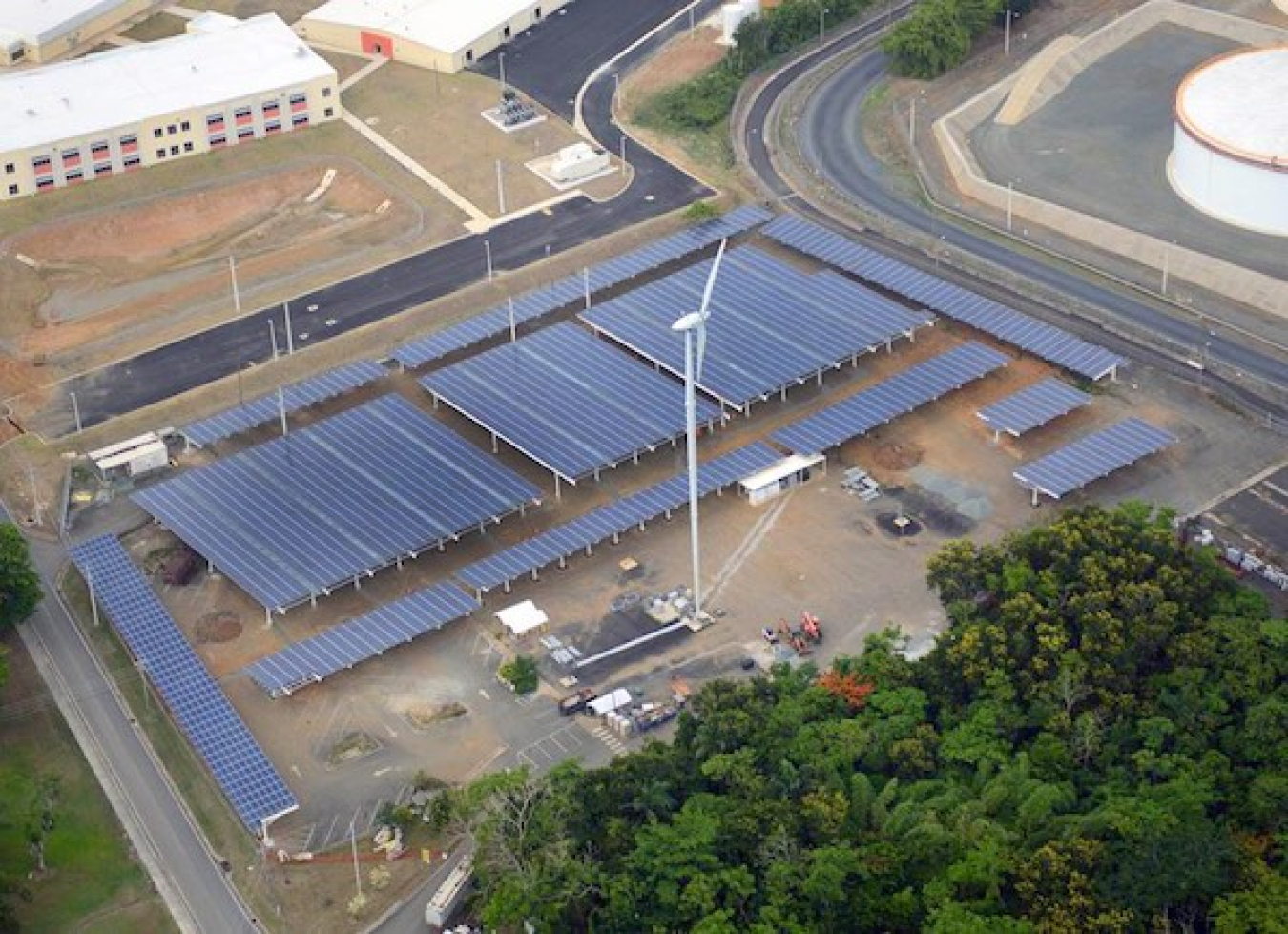Need assistance?
For more information about local grant funding, EV economics, and EVSE installation, contact the FEMP Sustainable Fleet Management Team.
Federal facilities and their fleets serve critical missions that may be compromised or require backup power in the event of a grid outage. As the federal government moves toward fleet electrification, site decarbonization, and deployment of local distributed energy resources (DERs), agencies should consider both managed and bidirectional charging.
Managed EV Charging
Managed EV charging is an adaptive means of charging EVs which considers both vehicle energy needs and control objectives, typically designed to provide grid support or mitigate the impacts of EV charging. The benefits of managed charging range from reducing electrical equipment upgrades, maximizing the value of local generation, and reducing the cost of grid energy. Managed charging also ensures that fleet vehicles are properly powered when needed, while reducing unnecessary burden on the building infrastructure and supporting a more reliable and resilient grid.
Bidirectional EV Charging and EVs for Mobile Storage
A bidirectional EV can receive energy from an EVSE (charge) and provide energy to an external load (discharge), and is often paired with a similarly capable EVSE. Often bidirectional vehicles are employed to provide backup power to buildings or specific loads, sometimes as part of a microgrid, through 'vehicle to building' (V2B). Bidirectional vehicles can also power the grid through ‘vehicle to grid’ (V2G) to provide various grid services, although the programs to incentivize these grid services are not yet widely in place for vehicle applications. Sites can check with their serving utility to ascertain if their utility’s interconnection agreement(s) permit EVs to provide reverse power flow to the grid.
Financing Mobile Storage
Bidirectional vehicles employed for building resilience and or load management may qualify for mobile storage financing with various FEMP programs (UESC, ESPC, ESPC ENABLE, AFFECT). Learn more about financing options for mobile storage.

Solar carport at Fort Buchanan covers eight ESPC-funded EVSE units.
The FEMP website has documented previous examples of EVSE funding opportunities used by select DOD, DOT, and State agencies. For example, the ESPC project at Fort Buchanan funded the purchase and installation of eight EVSE units under a solar carport to support the site’s growing light-duty EV fleet. The cost savings of various other energy conservation measures (ECMs) allowed for the financing of EVSE, which at that point did not provide load management ECMs. The Federal Aviation Administration (FAA) was awarded a UESC for the installation of solar photovoltaic carports at both sites and included the installation of conduit and junction boxes to support future installation of EVSE. By planning ahead, the site eliminated major construction costs and installation time for future EVSE installation, preparing the site to be EVSE-ready when the need arose.
Questions about EV charging?
Reach out to the various FEMP areas using the FEMP Assistance Request Portal.

